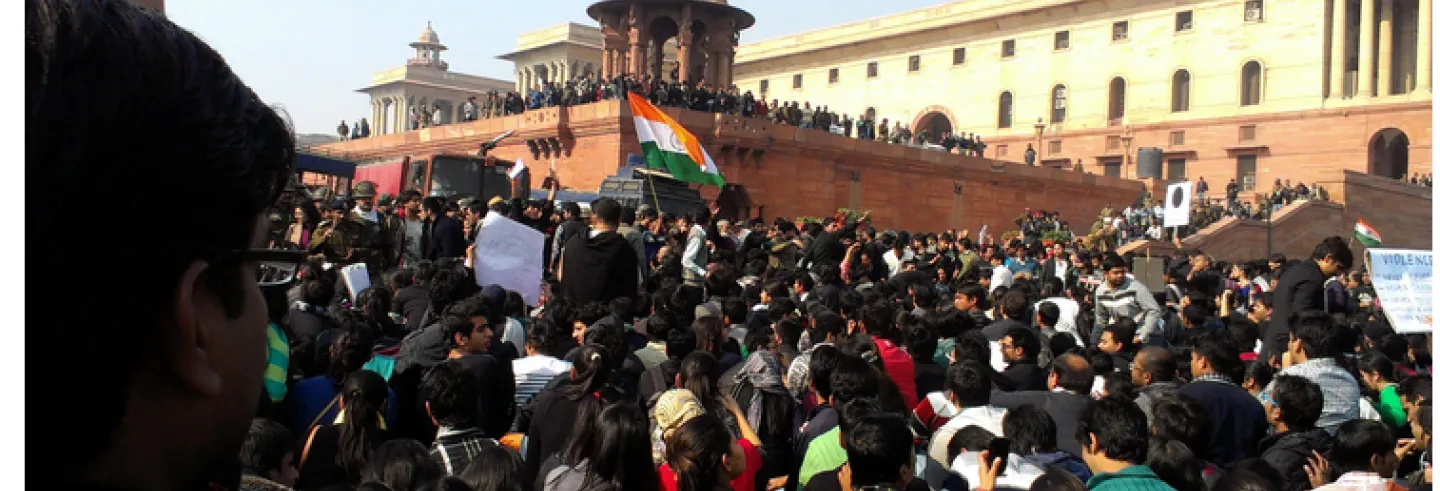
On Abuse in the Workplace
Mary E John’s article, “Sexual Violence 2012-2018 and #MeToo”, contextualises the last six years of feminist movements against sexual harassment in India. She argues that since sexual violence gained momentum in feminist politics, by extension, it became singularly associated with “womanhood”. The narrowly defined “feminine” status attached to the feminist movement unwittingly conceals the political contexts that engender it. Whereas these movements rightly call out the perpetual violence faced by women on a daily basis, it understates the questions related to power, hierarchies and the language of sexual violence.
Her article is especially relevant in the wake of the procedural vagueness showed by the otherwise pedantic Indian judiciary. In early May The Caravan reported a complaint by a former employee of the Supreme Court against the chief justice of India (CJI) Ranjan Gogoi. The complaint was dismissed after a half-hearted hearing in which CJI sat as a judge on his own case. The employee lost her job, was declared incompetent at work and several conspiracy theories emerged from the incident with other Supreme Court employees signing a petition in support of the CJI and referring to the allegations as “false and baseless”. The CJI too, was quoted as saying that the ‘harassment charges were a part of a bigger plot to deactivate him’.
What does it tell us about the workplace culture and politics? The workplace is defined as a space of competition, survival, risk and affective leadership. In short it follows a masculine logic. Your ability to work at odd-hours, show a “progressive” mind-set towards the opposite sex and; keep silent on internal discriminations is directly correlated with your skills to work in a team in a cordial manner. Otherwise, you are a trouble-maker. It also goes on to establish your temperament at workplace; commitment to work and; future promotions in the organisation. Several questions emerge from here: how do women even begin to articulate their discomfort, let alone seek redressal, against the whimsical behaviour of their male colleagues that is absolutely “normalised”? And how do we evidence “due processes” given the brutally judgmental atmosphere at the workplace towards anything but male? These are pertinent questions that reflect on the perils of analysing sexual violence as only women’s issue as it obscures the politics of institutional structures that reproduce power differences. I believe it points at our reluctance to talk about anything that is remotely injurious to our chances of survival and “growth” in the workplace or, makes us uncomfortable about our position of privilege.
Sexual violence is not a new phenomenon. And yet, the questions of redressal and justice remain unresolved. However, from time to time they get reinstated and force us to think. What happens when a colleague accuses the highest judicial authority? Do we follow “due process” or completely ignore it? What kind of redressal do we provide the complainant? Does it amount to justice if the institutions that we seek redressal from are in fact the ones that perpetrated the crime? When confronting cases of sexual violence, we struggle with these concerns. They determine our position in relation with the act of sexual violence and the institutional place and space within which it was committed. More often than not it is a known place to the woman. It would mean that they are expected to prove their legitimacy, right and choice of engaging with that place, and by extension, accepting their “voluntary” decision to be exposed to sexual violence.

